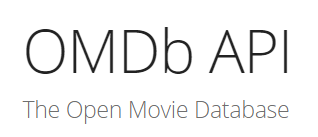The following are the specifications for the APIs to be implemented at the Health Repository end if an entity is only serving the role of a HIP. The specs are essentially duplicates from the Gateway and Health Repository, but put together so as to make it clear to *HIPs* which set of APIs they should implement to participate in the network.
The following are the specifications for the APIs to be implemented at the Health Repository end if an entity is only serving the role of a HIU. The specs are essentially duplicates from the Gateway and Bridge, but put together so as to make it clear to *HIUs* which set of APIs they should implement to participate in the network. 1. The APIs are organized by the flows - **identification**, **consent flow**, **data flow** and **monitoring**. They represent the APIs that are expected to be available at the HIU end by the Gateway. 2. For majority of the APIs, if Gateway has initiated a call, there are corresponding callback APIs on the Gateway. e.g for **/consents/hiu/notify** API on HIU end, its expected that a corresponding callback API **/consents/hiu/on-notify** on Gateway is called. Such APIs are organized under the **Gateway** label. 3. Gateway relevant APIs for HIUs are grouped under **Gateway** label. These include the APIs that HIPs are required to call on the Gateway. For example, to request a CM for consent, HIU would call **/consent-requests/init** API on gateway. 4. **NOTE**, in some of the API documentations below, **X-HIP-ID** is mentioned in header (for example in /auth/on-init). These are the cases, when a particular API is applicable for both HIU and HIP (e.g an entity is playing the role of HRP representing both HIU and HIP). If you are only playing the role of HIP, then only X-HIU-ID header will be sent
A web service for near earth objects. All the data is from the NASA JPL Asteroid team. NeoWs is proud to power AsteroidTracker on iOS and Android as well as related apps. Follow us on Twitter
The Buildings Database is a shared resource for the building industry. The Database, developed by the U.S. Department of Energy and the National Renewable Energy Laboratory (NREL), is a unique central repository of in-depth information and data on high-performance, green building projects across the United States and abroad.
Query our database of federal and state laws and incentives for alternative fuels and vehicles, air quality, fuel efficiency, and other transportation-related topics. This dataset powers the Federal and State Laws and Incentives on the Alternative Fuels Data Center.
With the Article Search API, you can search New York Times articles from Sept. 18, 1851 to today, retrieving headlines, abstracts, lead paragraphs, links to associated multimedia and other article metadata. Note: In URI examples and field names, italics indicate placeholders for variables or values. Brackets [ ] indicate optional items. Parentheses ( ) are not a convention — when URIs include parentheses, interpret them literally.
The Geographic API extends the Semantic API, using a linked data approach to enhance location concepts used in The New York Times' controlled vocabulary and data resources which combine them with the GeoNames database, an authoritative and free to use database of global geographical places, names and features.
The Semantic API complements the Articles API. With the Semantic API, you get access to the long list of people, places, organizations and other locations, entities and descriptors that make up the controlled vocabulary used as metadata by The New York Times (sometimes referred to as Times Tags and used for Times Topics pages). The Semantic API uses concepts which are, by definition, terms in The New York Times controlled vocabulary. Like the way facets are used in the Articles API, concepts are a good way to uncover articles of interest in The New York Times archive, and at the same time, limit the scope and number of those articles. The Semantic API maps to external semantic data resources, in a fashion consistent with the idea of linked data. The Semantic API also provides combination and relationship information to other, similar concepts in The New York Times controlled vocabulary.
The Socrata OpenDataNetwork (ODN) REST API exposes public data, often continuosly updated and enhanced, from many thousands of public government and non profit agencies. Much of this data originating from independent sources is fused together to create new, and often powerful, entity level data. The API, in addition to search and autosuggest capabilities for finding datasets, enables data based comparisons across geographical regions such as states, counties, metropolitan areas, cities and zip codes using highly vetted data providers such as US Census, BEA, HUD and others. Comparison data is preformatted for easy and efficient display on a chart, graph or interactive map. The API also exposes data organized by narrative style questions a human might ask. The questions can be rapidly found using an autosuggest style index, and then used to directly access all data needed to thoroughly and authoritatively answer the question. Retrieved data includes time series (temporally aligned), tabular, map heavy (includes spatial boundaries), and auto generated unstructured descriptive text. The ODN API does not duplicate API endpoints or services provided by public sector agencies, but rather, returns context relevant pre-populated REST URLs, when appropriate, so the caller can access data directly from the source. The [open source](http://github.com/socrata/odn-backend) API powers [OpenDataNetwork.com](http://OpenDataNetwork.com), an [open source](http://github.com/socrata/opendatanetwork.com) site; the site highlights myriad uses and provides API badges with contextually relevant API example REST endpoints and documentation pointers. Finally, we continuously add new dat sources which appear automatically in the API, so if your favorite data source is not available, check back soon. You can also join us [HERE](http://www.opendatanetwork.com/join-open-data-network) and receive updates or let us know which data sources you are most interested in. ## App Tokens Registering for and including a [Socrata application token](https://dev.socrata.com/docs/app-tokens.html) is _required_ for the ODN API. They can be passed either using the `app_token` parameter or the `X-App-Token` HTTP header.


